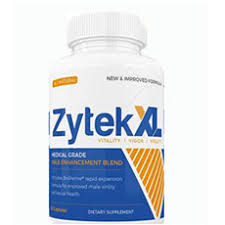
Now you understand why I delivered the build output in the staging folder. If they are not present, packaging will fail. This relative path assumes that the root folder is the build staging directory it will search this directory for the folders specified here. A relative path is set as the value and indicates the folder that needs to be included in the DAR package. This attribute is very important, as it will guide the build task in creating the deployment archive. The WebContent element indicates that the files that do represent the web site.Īn attribute called file is present on the deployable element iis.WebContent. I checked in the following manifest: Īs you can see, I specified the required IIS application pool, a web site, and, most importantly, WebContent. You can read about creating a manifest file at XL Deploy manifest format. In order to continue, you need to have a valid XL Deploy manifest file checked in to our source control. You can find more information about build steps on MSDN at Specify your build steps.

Now you are sure that the project builds correctly and we can continue with our next task, which is deploying the application via XL Deploy. If everything went well, you will get a ‘green’ build. Enter a relevant name and optionally set the comment. Make sure that Restore NuGet Packages is selected and that the correct version of Visual Studio is listed.

For now, I will not change any other setting. A list of available variables and their usage is explained in the MSDN article Use variables. This is a common way for MSBuild to pass a parameter I’m using a variable that will resolve in a specific path when the build is run. That’s why I am going to set MSBuild Arguments to /p:OutDir=$(build.stagingDirectory).
XL DEPLOYIT ARCHIVE
This is an important step because when the XL Deploy build task starts creating the deployment archive (DAR package), it will search for items to include in it, starting from this directory (considering the build staging directory as root). Next you need to use the MSBuild Arguments setting to indicate that all of the built items should be delivered in the build staging directory. This is the solution that will be built in the build definition. In my case, that is $/XL Deploy Showcase/AwesomeWebApp/AwesomeWebApp.sln. Once found and confirmed, the Solution box will be populated with the correct path. Click the button with three dots and locate your solution file in the version control tree. The first mandatory setting is the path to the solution file in source control. Once added, you need to set the necessary parameters. Now you can specify the necessary build steps to compile and publish the web application. For this example I am going to use TFVC however, all of the techniques I am going to describe do work also with Git repository. Set the repository mappings accordingly before proceeding any further again, refer to the MSDN article Specify the repository for more information about doing so.
XL DEPLOYIT HOW TO
If you are not familiar with how to do this, refer to the MSDN article Create a build definition. Create a new empty build definition in your project. Building your web applicationįirst things first. Once you ensure that these criteria are met, you can continue reading.

As a prerequisite for the XL Deploy build task, your XL Deploy instance needs to be of version 5.0.0 or later earlier versions are not supported.
XL DEPLOYIT INSTALL
You also need to install the XL Deploy build task if you haven’t done so already, refer to Install the XL Deploy build task. In the case of on-premises TFS 2015, this means that you need to have installed Visual Studio on your build server. First of all, your build agent needs to be capable of building your application. Prerequisitesīefore we start, make sure that you have all of the necessary items in place. In the following post I will show you how to build an ASP.NET MVC application, create the deployment package, and deploy it via XL Deploy. It also contains some other interesting options that will ease the process of versioning the deployment package. The new build task is capable of creating a deployment archive (DAR package), importing it to an instance of XL Deploy, and eventually, if requested, triggering the deployment of the newly added package. Recently XebiaLabs released a build task for Microsoft Visual Studio Team Services (VSTS) and Team Foundation Server (TFS) 2015 that facilitates the integration of the vNext build pipeline with their product, XL Deploy.


 0 kommentar(er)
0 kommentar(er)
